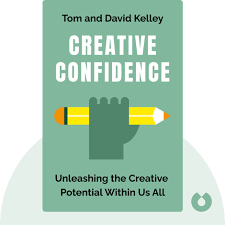Crafting a White Paper on Innovation and Design Thinking: A Creative Confidence Approach
Introduction
In today's rapidly evolving world, innovation is no longer an option but a necessity. Organizations that can adapt to change, embrace new ideas, and deliver innovative solutions are the ones that thrive. Design thinking, a human-centered approach to problem-solving, has emerged as a powerful tool to drive innovation. This white paper explores the intersection of creative confidence and design thinking, drawing insights from the book "Creative Confidence" by Tom and David Kelley.
Understanding Creative Confidence
Creative confidence, as defined by the Kelley brothers, is the belief in one's ability to create new ideas and bring them to life. It is a mindset that empowers individuals to think outside the box, experiment fearlessly, and embrace failure as a stepping stone to success.
The Role of Design Thinking in Innovation
Design thinking is a five-step iterative process that involves:
- Empathize: Understanding the needs, desires, and challenges of the user through observation, interviews, and other research methods.
- Define: Clearly articulating the problem statement based on the insights gained during the empathize phase.
- Ideate: Generating a wide range of creative solutions through brainstorming, mind mapping, and other ideation techniques.
- Prototype: Creating tangible representations of the ideas to test and refine them.
- Test: Gathering feedback on the prototypes to inform further iterations and improvements.
The Synergy Between Creative Confidence and Design Thinking
Creative confidence and design thinking are inherently linked. By fostering a culture of creativity and innovation, organizations can empower their employees to:
- Embrace challenges: View obstacles as opportunities for growth and learning.
- Think critically: Question assumptions and explore alternative solutions.
- Collaborate effectively: Work together to generate diverse perspectives and ideas.
- Iterate fearlessly: Experiment, fail, and learn from mistakes.
- Deliver meaningful solutions: Create products and services that truly resonate with users.
Practical Applications of Creative Confidence and Design Thinking
The principles of creative confidence and design thinking can be applied to various domains, including:
- Product development: Creating innovative products that meet customer needs and exceed expectations.
- Service design: Designing seamless and delightful customer experiences.
- Organizational innovation: Transforming business processes and culture to drive growth and efficiency.
- Social impact: Addressing societal challenges through creative solutions.
References and Further Reading
- Kelley, T., & Kelley, D. (2013). Creative Confidence: Unleashing the Creative Potential Within Us. Currency.
- Brown, T. (2008). Change by Design: How Design Thinking Transforms Organizations and Markets. HarperCollins.
- IDEO. (2010). Design Thinking for Innovation. IDEO.org.
- Stanford d.school. (2023). Design Thinking Process. Stanford University.
Conclusion
By cultivating creative confidence and embracing design thinking, organizations can unlock their full potential for innovation. By empowering employees to think creatively, collaborate effectively, and iterate fearlessly, they can create products and services that truly make a difference.
[Your Name] [Your Title/Position] [Your Organization]
[Date]
Note: This is a basic outline for a white paper. You can expand on each section, provide specific examples, and incorporate more in-depth research to create a comprehensive document.



